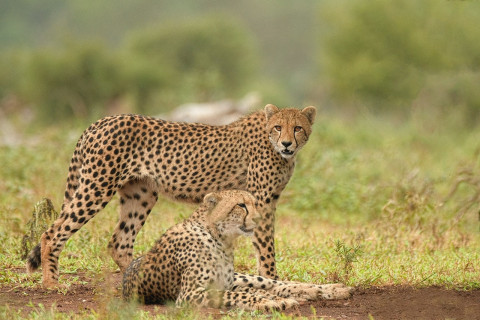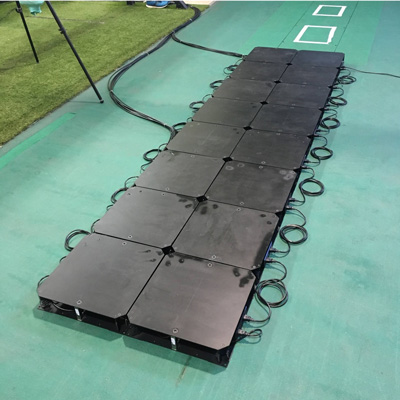
foto: Photo by Frans Van Heerden from Pexels
How many times do we hear stories about how an ingenious solution to solve one challenge ends up being a perfect solution for something the inventor had never thought about? This is how South African researcher Amir Patel’s fascination with the speed and maneuverability of the cheetah led him to the health care arena. In devising methods to understand the way cheetah’s move, he has come up with a more affordable and accessible mechanism to support the rehabilitation of patients suffering injury or neurological disease.
Amir Patel’s innovation journey sprang from his research into animal locomotion and, in particular, his fascination with the speed and maneuverability of the cheetah (Acinonyx jubatus), the fastest animal on earth. The cheetah can reach speeds of between 80 and 130 km per hour.
Amir, an associate professor in the Electrical Engineering Department in the Faculty of Engineering and the Built Environment at the University of Cape Town in South Africa, explains: “My research is all about understanding how animals and humans can move. So I have developed various technologies to do this and I am particularly fascinated by the cheetah.”
He uses robotics and a range of techniques, including sensor fusion, optimal control and physical experiments to understand the neuromechanics that allow the cheetah and other animals to travel and maneuver at speed.
My fascination with – and research into – cheetah locomotion has led to several innovations in robotics and machine learning (artificial intelligence), he says. We wanted to estimate how much ground contact force a cheetah creates, so in order to do that I had to develop a new kind of method to measure the force because the current methods are extremely expensive. […] We had to come up with several inventions to understand how the cheetah moves and how it’s able to generate forces on the ground and to turn and do all of its cool high – speed maneuvers,” Amir explains.
His ground-breaking work in the field of animal sensing has resulted in two sensor patents with applications in human biomechanics.
“My inventions are sort of emergent. I don’t really go about saying I want to invent something for healthcare,” he says, noting that cheetah locomotion is such a complex and challenging problem that he had no choice but to “innovate and to come up with new ideas.”
During that process, he explains, “I came up with a new way of doing 3D force sensing, which is much, much cheaper and in that way I actually came up with a much more accessible mechanism for doing rehabilitation. So things like orthopedics or any kind of neurological disease, that require rehabilitation with a 3D force plate. So with my invention, we can hopefully make rehabilitation more accessible.”
Amir Patel is featured in the World Intellectual Property Day Youth Gallery.
We may not have all the resources compared to the developed world, but we have amazing ideas and IP is a mechanism to protect those ideas in order to make impact globally.
As an academic, at first, Amir’s primary focus was on writing and publishing papers. To date, he has published 20 papers in the top five Robotics and Computer Vision publications, co-authored a paper in Nature Protocols and a cover article in the Journal of Integrative & Comparative Biology (ICB). However, he now also recognizes the value of thinking about how to protect innovative research work with intellectual property (IP).
IP “actually provides you with a mechanism to translate that innovation and to maximize its impact. And the way you do that is through a patent,” he says. “I have got two patents so far and the way it works is that we take the really cool research that we do and produce it into something that is protectable, that can be sold, and that can be utilized by a company and in so doing, create more jobs … and get it out into the world.”
We may not have all the resources compared to the developed world, but we have amazing ideas and IP is a mechanism to protect those ideas in order to make impact globally, he says.

To support his research into Cheetah locomotion, Amir developed a new, more affordable way to do 3-D force sensing, which helps to characterize and analyze biomechanical processes, such as walking, running, jumping with application in areas like clinical rehabilitation and sports training programs.
Commenting on the consequences of not being IP aware, he says, “The risk of not being aware of IP rights is that somebody steals your idea and that’s really disheartening. You may actually find that somebody exploits it and they use it in a way that you weren’t intending. I think being aware of that and patenting first and publishing later is something that I have learned.”
Amir and his team are in the process of spinning out a new company, Acino Technologies, and will be selling and marketing the force plates developed to advance their animal research to those who need them for rehabilitation and/or training purposes.